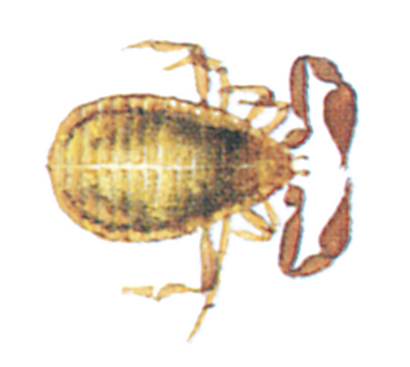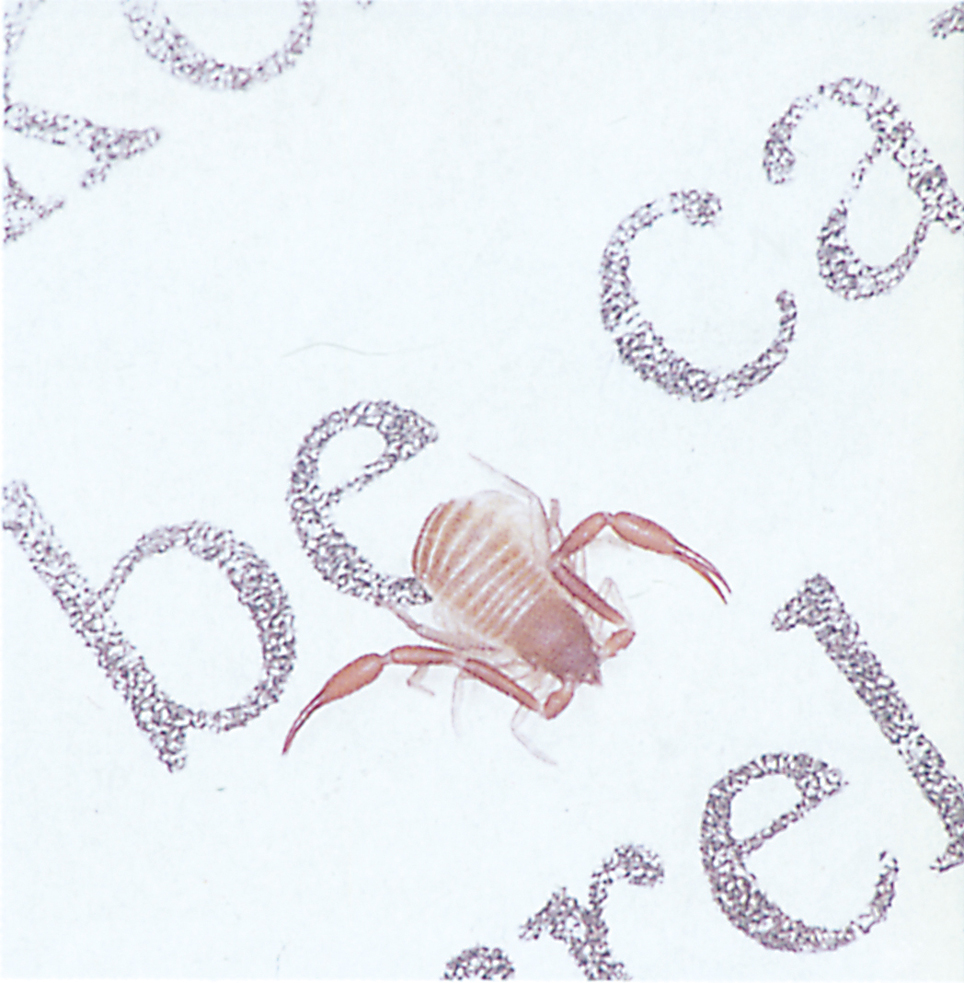(Latin: Chelifer cancroides)
Aka. Book scorpion or pseudoscorpion

False scorpions have four pairs of legs and they move about very rapidly, both back- wards and forwards. They can be found, for instance, in a pile of papers or books that has lain slightly damp for some time. They somewhat resemble tiny scorpions because they have a pair of deadly pincers. When moving around false scorpions hold these up in front of them the whole time, and it is primarily the sensory hairs on the pincers which keep them informed about what is going on around them.
However, the pincers are not used solely as sense organs. In their lilliput world, false scorpions are voracious predators which hunt for any mites, springtails, booklice and other small invertebrates that come within their reach. Such prey is of course gripped by the pincers.

False scorpions also have venom glands which open at the tips of the pincers, and some species are evidently extremely venomous in relation to their size. They have been seen to bite prey considerably larger than themselves, and the prey has died immediately.
However, they are never dangerous to man, for they are too small and cannot bite through the skin.
Several species are very common outdoors, where they live a sheltered existence under moss, among fallen leaves, and in similar places.
Some species are also common on dunghills where their prey includes the eggs and small larvae of flies. Sometimes they also attach themselves to the adult flies, not in an attempt to kill them or to suck their juices, but rather to use them as a convenient and rapid mode of transport to a new and tempting dunghill with fresh fly eggs and larvae.




